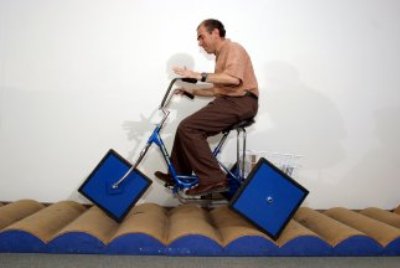Re: North-South Rail Link
Hi! I saw this thread in blog referrer stats. I wrote something but it got eaten. A few comments:
1. Having just one South Side portal at Back Bay is a nonstarter. Through-running is useful mainly for local service, not longer-range service. In Paris, the RER is more local than the Transilien network (which stub-ends at the traditional terminals), and in Tokyo, the Keihin-Tohoku and Yamanote Lines provide local service, while longer-distance commuter service only began running through about a week ago. In Boston, the Fairmount Line has the most local demand while the Providence and Worcester Lines have the longest-range demand, so it's necessary to include them in the scheme.
2. The plans for the NSRL involve two 40'-diameter bores, and as I understand, this is what the space left in the Big Dig is for. This diameter is (barely) large enough to fit two tracks with platforms, as in the diagrams of mine that Arlington posted above. Thus, the cost of a station at Aquarium is likely to be very low. I agree that it's a waste of money at $1 billion, but with large-diameter bores, it's likely to cost a fraction of that. I think even $250 million is a good deal given the Blue Line connection.
3. Electrification is extremely useful independently of the NSRL, although the two projects work best together (NSRL requires electrification, and electrification is more useful if North Side commuters have access to South Station). The current MBTA consists have an acceleration time penalty of 70 seconds just from 0 to 60 mph. The borderline-vaporware Colorado Railcars are at 43 seconds. In YouTube videos, the UIC-compliant Talent DMU has a 33-second penalty to 100 km/h, and the FLIRT EMU has a 14-second one (as does the FRA-compliant Silverliner V), and only 24 seconds to 160 km/h. This allows all-stop trains to get from Boston to Providence in 42 minutes, including schedule contingency. Systemwide there are 530 km to electrify, and at 90s-era NEC electrification cost it would cost $1.5-2 billion, plus around $500 million for extensions to Hyannis, New Bedford, and Manchester. But EMUs are cheaper to buy, maintain, and run than diesel trains, so the lifetime cost of electrification is negative.
4. Amtrak's proposed third track is of no use. If the MBTA goes EMU, Amtrak has no need for overtakes unless it speeds the Acela to true HSR speeds, about 300 km/h. A 300 km/h Acela would have to overtake the Providence Line at two places: Readville-Route 128, where there's space for two additional tracks, and Attleboro, where there already are four tracks. That would allow 15-minute frequencies for each of high-speed rail, Providence Line trains, and New Bedford/Fall River trains. Short, strategic four-track overtakes are better than long three-track segments.
5. To minimize the complexity of flying junctions at the North Side portal, it's better to have fixed pairings of lines, the opposite of what Commuting Boston Student suggests. It also simplifies schedule planning. (Cross-platform transfers are useful in either case, by the way.)
6. The Grand Junction could be activated, with double track and a connection to the inner direction Worcester Line rather than the outer one, to create a circle line. It'd be a suboptimal line because it's too narrow a diameter, though - the ideal circle line would roughly follow the 66 from Harvard to Dudley, but would also require a lot of greenfield tunneling. If the Grand Junction is used in service, trains should be electrified ahead of all other lines, run every 10-15 minutes at worst, and make frequent stops. Transfers to other lines include Main Street for Kendall/MIT (with a lot of walking), Brickbottom near Route 23 for the GLX, BU for the B branch, and maybe Hynes for the Green Line trunk.
7. It goes without saying that double-tracking all inner lines is required. It's also an order of magnitude cheaper than the tunnel.
8. There should be some additional infill stops on lines other than Fairmount, using EMUs' very high acceleration rates to maintain fast schedules with more stops. The Fitchburg Line should stop more in Cambridge, e.g. at Union Square and Neighborhood Nine. The Lowell Line should have a transfer to the GLX, e.g. at Tufts or Brickbottom. The Worcester Line should have more stops in Allston and Brighton. On some lines there is room for both local and express service, e.g. local trains to Brandeis, and trains to Fitchburg skipping many stops in Cambridge. In contrast, stations that can't be served full-time shouldn't be served at all. Sorry, Mishawum, River Works, Plimptonville, Hastings, and Silver Hill.
9. Amtrak shouldn't really be part of the tunnel. The surface rail schedule should accommodate high-speed rail if Amtrak decides to run any, but the tunnel should be built for local and regional trains. Even if there's high-speed rail south to New York, I can see maybe one hourly train to Maine use the tunnel for New York-Portland through-service. If the schedule and the line pairing can accommodate it then great, but if not, there's only so much money that should go to a train to Portland.





